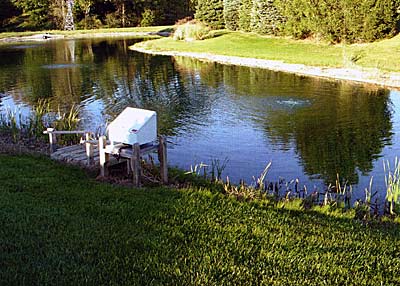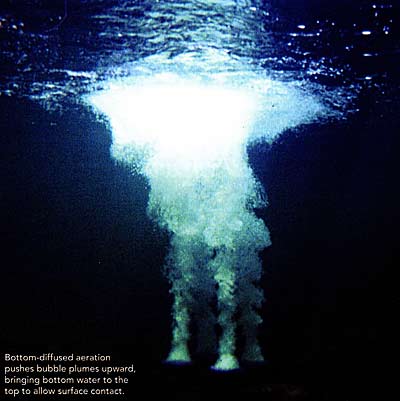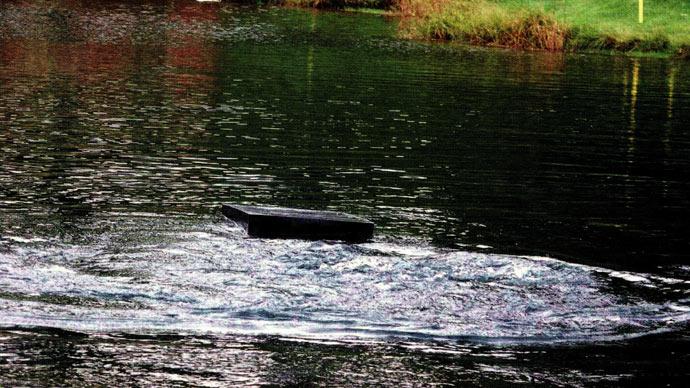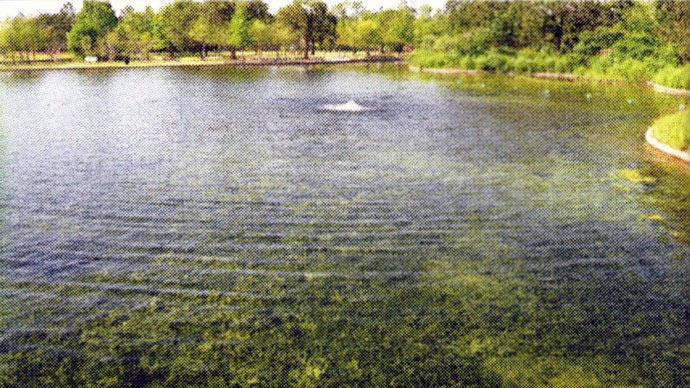
While we're still wiping sweat off our September afternoon brows, we are thinking about fall. Days are getting shorter, and it won't be long before our water temperatures begin to cool.
Temperature is a crucial fact to remember as you think about your pond management strategy. Temperature is the trigger, the impetus for nature to do what it does. There are temperature windows for spawning, vegetation growth, best fish health, planktonic algae, and when to have the best catch rates.
Use temperature to your advantage.
For those of you who have aeration for the pond, listen up. For those of you who don't, keep reading.
Several reputable, helpful, and insightful aeration companies help pond owners design the best system. The products are varied from fountains (not so effective in aerating a pond) to circulators to bottom-diffused aeration.
The most common whole pond aeration systems are the bottom-diffused ones. They have a high-volume, low-pressure air compressor that sends air through a hose into a diffuser at the pond's bottom. Plumes of air bubbles rise through the water column, assisting bottom water to lift upward and contact the atmosphere. When that happens, the changes are dramatic.
Cold water, sequestered beneath the thermocline, is brought to the surface. That anoxic, smelly, yucky water is revived, releasing its gases, inhaling oxygen, and warming. While all that sounds good...it's not necessarily so.
For unaerated ponds with new aeration systems, be really careful this time of year. Follow your manufacturer's recommendations for startup. Push too much of that anoxic water to the top too quickly, and you risk killing your fish.
That cold water under your thermocline ran out of oxygen earlier this summer...bacteria consumed it, and nature has no way of shoving more dissolved oxygen into the depths. If you start aerating now, take it easy.

For those who've been aerating all year, look at your fall strategy. Most who have bottom-diffused aeration and keep it on 24/7 have seen a change in fish behavior, especially in southern waters. When aeration is on all the time, the temperature at the surface is the same as the bottom...it's autonomous. Nature is not autonomous.
Some fish species just don't thrive at temperatures above about 83 degrees. That's especially the case for largemouth bass and all the cool water fish.
That's a big reason we preach about putting aeration systems on a timer in the hottest part of summer, from 9:00 pm to 9:00 am. That way, water temperature isn't as influenced by the hottest part of the day. Just a few degrees difference can significantly affect summer fish growth and behavior.
Now that we're getting closer to fall, it's time to think about cooler water and aeration. For most, aeration influences dissolved oxygen, keeps water moving, and helps keep our water "happy." Happy, healthy water is the medium. It's the medium for all things biological in your pond.
While adding oxygen via water movement is a crucial component to water health, it's just as essential to assist the breakdown of organic matter which makes its way to the pond bottom. Those tree leaves, fish waste, dead algae, decaying plants—all that stuff benefits from moving water. More oxygen at the depths expedites the critical breakdown and composting of all that organic stuff, releasing nutrients to be utilized in the food chain, helping grow stuff that bugs eat so fish can eat the bugs, and nudging the productivity of your precious pond.
As the water temperature cools, more aeration is better, up to a point.
Aeration is less relevant when our water temperature drops into the 50s later this fall or early winter. By then, most of the microbial action has slowed to a crawl, fish metabolism is sluggish, and our ponds are about ready to rest.
Between now and then, we will see the best two or three—or four—months of the growing season.
That's why we want to push our water to cleanse itself.
That's why we want to consider an aeration strategy this time of year.
Reprinted with permission from Pond Boss Magazine


